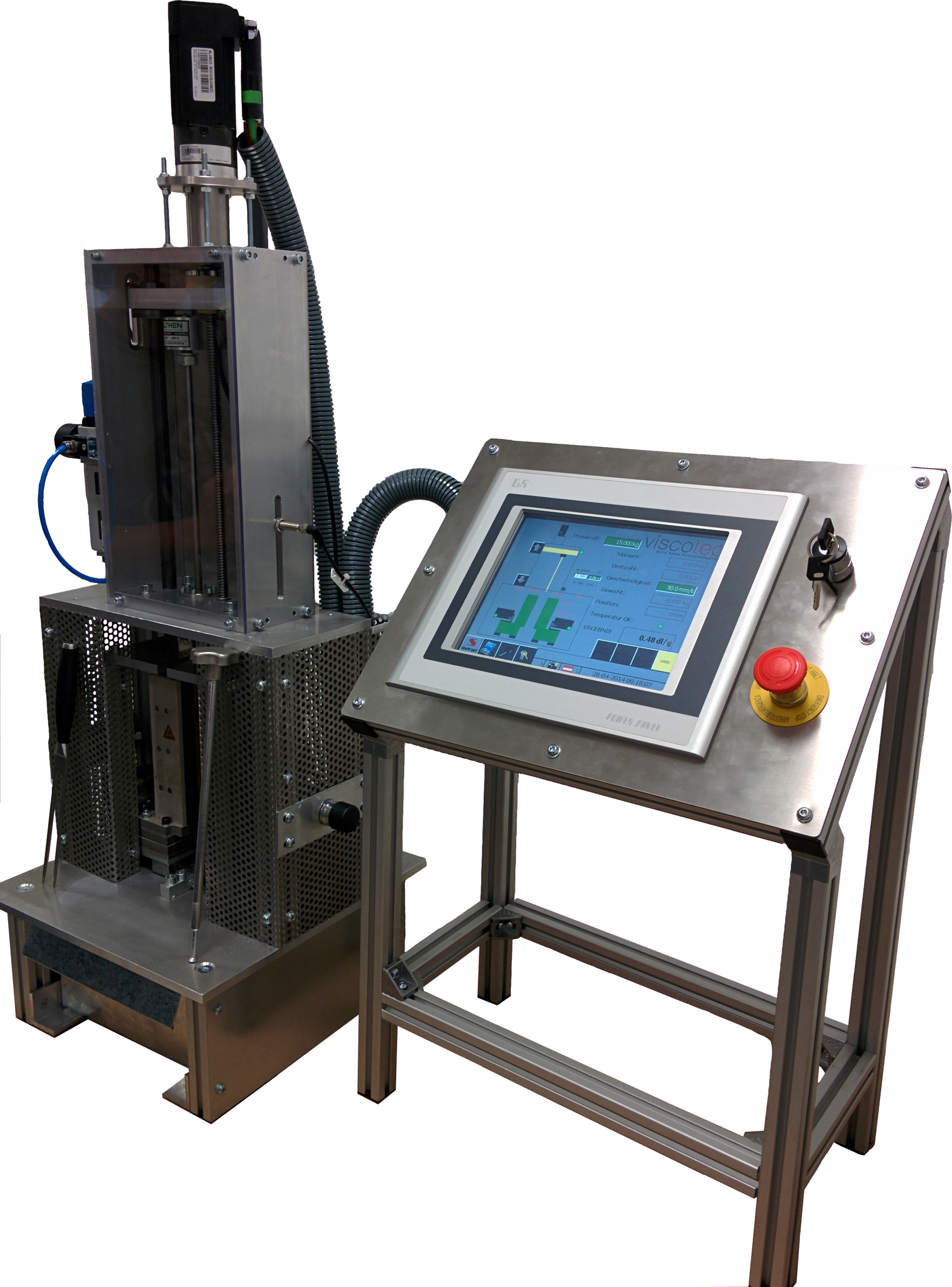2013 / 2014
Automatisiertes intrinsische Viskosität Messgerät
Jahrgang
Projektpartner
Starlinger & Co. GesmbH Viscotec
Maturanten

Haindl Gregor
5BHMIA

Hartl Martin
5BHMIA

Landl Thomas
5BHMIA
Schürz Stefan
5BHMIA

Wurzinger Andreas
5BHMIA
Betreuer

Kiesl Walter

Kaufmann Gerhard
Starlinger Viscotec führt Messungen der intrinsischen Viskosität von recyceltem Polyethylenterephthalat (PET) durch. Das bisherige Messsystem bestand aus vielen manuellen Schritten. Die Verursachte einen hohen Personalaufwand. Die Aufgabenstellung war daher ein Gerät zu entwickeln, das die Messung der intrinsischen Viskosität so weit als möglich automatisch vornimmt und somit den Arbeitseinsatz reduziert.
Um die Messung auf einen hohen Automatisierungsgrad zu bekommen, wird ein Magazin von 24 Proben verwendet. Basis des Messvorgangs ist eine mehrstündige Ausdampfphase des Kunststoffes unter Vakuum bei ca. 140°C. Danach wird der Kunststoff auf Prüftemperatur erhitzt und anschließend durch eine Matrize gepresst. Zur Bestimmung der Viskosität solle ein Kraftkonstantes Verfahren zur Anwendung kommen. Durch die Messwerte kann auf die intrinsische Viskosität geschlossen werden. Das Gerät wird mit einer Steuerung von Bernecker & Rainer betrieben.
Das entwickelte Gerät ist ein Vakuumofen mit Karussellmagazin für die Kunststoffproben. Die Auf-heizung auf Prüftemperatur passiert mit Heizpatronen, die in Halbschalen eingebaut sind. Das Durch-pressen und die Weiterdrehung des Magazins werden jeweils mit einem Servomotor durch-geführt.
Dieses Gerät wurde jedoch nur konstruiert und ausgearbeitet. Gebaut wurde eine verein-fachte Version ohne Vakuumofen und ohne Magazin für nur eine Probe.
Starlinger Viscotec measures the intrinsic viscosity of recycled Polyethylenterephthalat (PET). The measuring process included a lot of manual work. The task was to develop a device, which measures the intrinsic viscosity automatically and decrease workload in measurement.
A hopper of 24 samples is used to reach a high level of automation. The measuring process starts at the stage of evaporation. The PET is heated to 140 degree Celsius in a vacuum for a few hours. After that it is heated up to measurement temperature. Then the PET is pressed through a die plate. The viscosity is measured via a force-constant method. A Bernecker & Rainer PLC controls the device.
The device we’ve developed is a vacuum furnace with a carousel hopper for the plastic samples. The heating up to measurement temperature is done with heating cartridges. The pressing through the die plate and the hopper are each driven by a servo motor.
This device has been only designed in a 3D model. A simplified version of the device was assembled. This version is without a vacuum furnace and for only one sample at a time.


